Attention Deficit Hyperactivity Disorder: Utilisation Analysis
Page last updated: 26 October 2018
Drug utilisation sub-committee (DUSC)
May 2018
Abstract
Purpose
To review the utilisation of Pharmaceutical Benefits Scheme and Repatriation Pharmaceutical Benefits Scheme (R/PBS) listed medicines used in the management of attention deficit hyperactivity disorder (ADHD). This includes a predicted versus actual analysis of lisdexamfetamine in the first 24 months of R/PBS listing. Lisdexamfetamine was first R/PBS-listed for this indication on 1 September 2015.
Date of listing on the Pharmaceutical Benefits Scheme (PBS)
- Dexamfetamine - 1 December 1973
- Methylphenidate immediate release (IR) - 1 August 2005
- Methylphenidate modified release (MR) (Concertaâ) - 1 April 2007
- Methylphenidate modified release (MR) (Ritalin LAâ) - 1 April 2008
- Atomoxetine - 1 July 2007 requiring authority approval. On 1 August 2014, the restriction was simplified and changed to streamlined authority
- Lisdexamfetamine - 1 September 2015
Subsidy of lisdexamfetamine, atomoxetine and the two modified-release forms of methylphenidate (Ritalin LA® and Concerta®) is limited to patients diagnosed between the ages of 6 and 18 years of age inclusive. In addition, for modified-release methylphenidate, patients need to have demonstrated a response to immediate-release methylphenidate with no emergence of adverse events. Lisdexamfetamine and Concerta® are for patients requiring coverage over 12 hours. Ritalin LA® is for patients requiring coverage over 8 hours.
Atomoxetine is subsidised for patients unable to take dexamfetamine, lisdexamfetamine or methylphenidate due to specific circumstances set out in the PBS restriction. Patients need to have been diagnosed by a paediatrician or psychiatrist according to the DSM-5 criteria.
Data Source / methodology
The analysis used data from the Department of Human Services (DHS) supplied prescriptions database.
Key Findings
Over the five year period 2013-2017:
- The number of patients treated with R/PBS medicines for ADHD has risen at a yearly average growth rate of 9.9%.
- The number of prescriptions also increased at similar growth rates.
- The most commonly used medicine in terms of prevalent patients is the modified-release formulation of methylphenidate.
- More males than females were treated, although the ratio is decreasing over time.
- Children aged 6-12 years old account for over 40% of R/PBS ADHD medicines supplied.
A snapshot of medicine use in 2017 shows that:
- The majority of prescriptions were written by paediatricians or psychiatrists. Most Australian states and territories restrict the prescribing of methylphenidate, lisdexamfetamine and dexamfetamine for the treatment of ADHD to specialists.
- Rates of prescribing vary across states and territories. The rates of treatment in school-aged children were highest in the ACT, NSW and Queensland. Rates of treatment in adults were highest in Western Australia.
Lisdexamfetamine:
- The increase in growth of overall ADHD medicines supplied may be attributed to the listing of lisdexamfetamine in September 2015 and a lack of offset from substitution of other ADHD medicines.
- 17,366 and 26,858 R/PBS patients were treated with lisdexamfetamine in the first two years of listing respectively. This was higher than predicted.
- The total number of lisdexamfetamine prescriptions supplied in Year 1 (83,246) was similar to predicted. However, there were more prescriptions in Year 2 (2,435,807) than expected.
- A closer look at the distribution of the number of prescriptions per patient in the 12 months after initiation found that 15% of patients had one supply, while 30% of patients had two to five prescriptions supplied in that period. The reasons for lower than expected prescriptions per patient are not known, but may be due to the submission not accounting for a half cycle correction, adverse effects discontinuation, drug holidays and combination use with other ADHD medicines.
- The expected cost offset from substitution of other ADHD medicines to lisdexamfetamine has not been realised.
PDF version of Full Report (PDF 463KB)
Word version of Full Report (Word 160KB)




